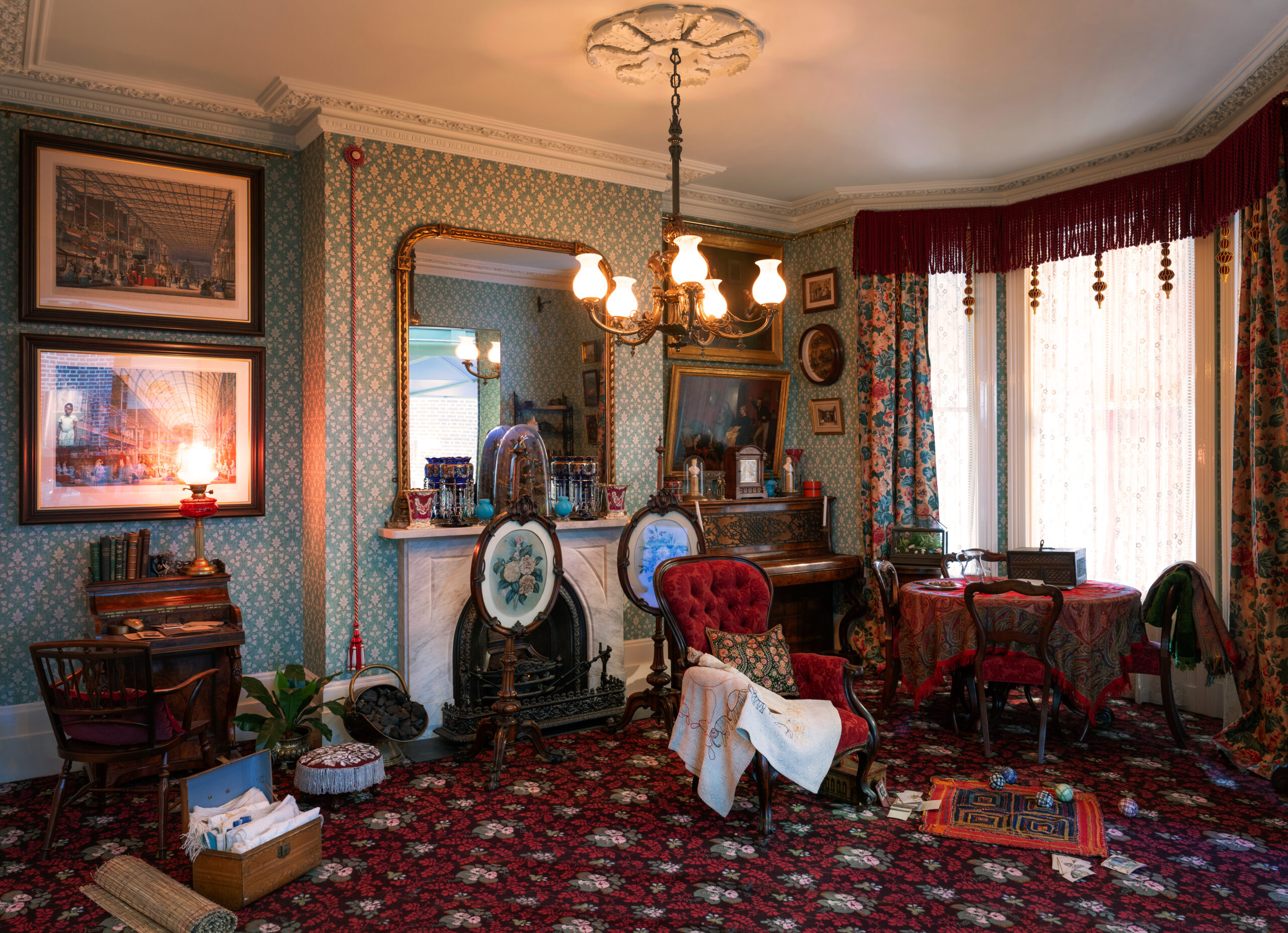Located in Chelsea, this terraced house was a typical home built to accommodate London’s fast-growing middle classes. Spread across four floors, the rooms have high ceilings and large bay windows to create bright spaces. It would have been home to the family and their servants, who would have slept in the attic.
Bunoo is packing up her things this morning. Bunoo is an ayah, employed by the Stevenson family to look after their children Mary, Thomas and Beatrice during the three-week long journey between Calcutta (Kolkata), India, and London.
On the voyage Bunoo took care of the children’s health, education and play, but now the Stevensons have settled into their Chelsea home, she and the children will have to say goodbye. Bunoo will have to find work with a new family to travel back to India.
To make some extra money, Bunoo has also brought a trunk full of Indian textiles and souvenirs to sell. Indian products and art have become very popular in Britain, particularly with families who lived in British India.
This room was curated with Dr Arunima Datta.
Objects to look out for
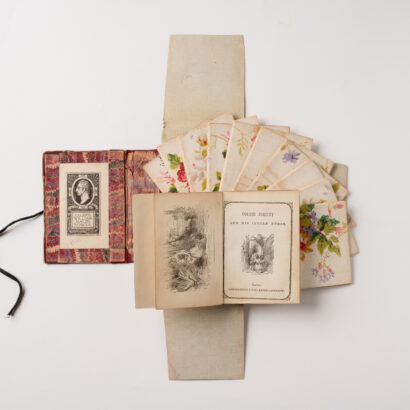
Cousin Johnny and his Indian Maid by Charlotte O’Brien
Illustrated by Edward Whymper, this children’s book from about 1855 shows the complex bond between ayahs and the children they looked after. Although her services are appreciated, the ayah is constantly reminded of her marginalised place in British society through differences in her race and class.
Cousin Johnny and his Indian Maid, Charlotte O’Brien, Groombridge and Son, about 1855, Credit: Tian Khee Siong
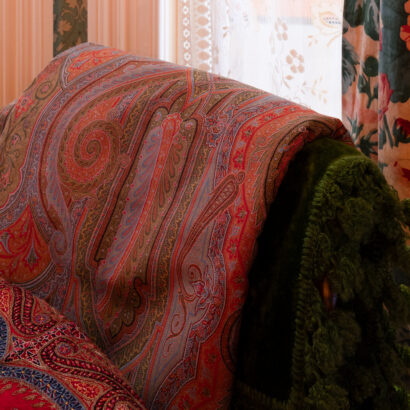
Pashmina Shawls
Although they originated as male garments in India, shawls gained popularity among European women from the 1750s to the 1870s. Some travelling ayahs traded Indian commodities in the UK such as jewels and fabrics and would return with European objects to sell in India. Travelling ayahs often showed entrepreneurship, making the most of their situation.
Pashmina shawls, Credit: Jaron James
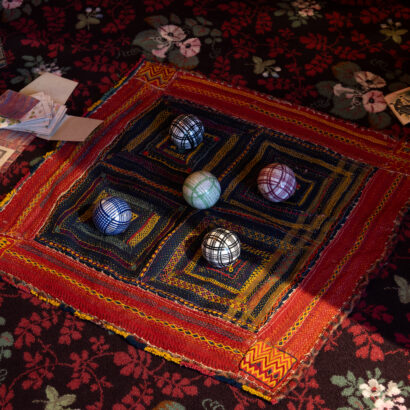
Toys
Children are very much at the centre of this home, sharing the parlour with their parents and using the space to learn and play with their toys. By the 1870s attitudes towards childhood were idealised; it was seen as a joyous time of life to be cherished.
Toys, Credit: Jaron James

A Young Teacher by Rebecca Solomon, 1863
Solomon depicts a poignant moment between an ayah and the two young children in her care. The model for the ayah, Fanny Eaton, was born in Jamaica and often modelled for the Pre-Raphaelite artists when she set up home in London. Her depiction challenges traditional representations of Britain in the 1800s, but also raises questions about how people of colour were viewed, as she is being represented as ethnically Asian in this painting.
A Young Teacher, Rebecca Solomon, 1863, Credit: Museum of the Home
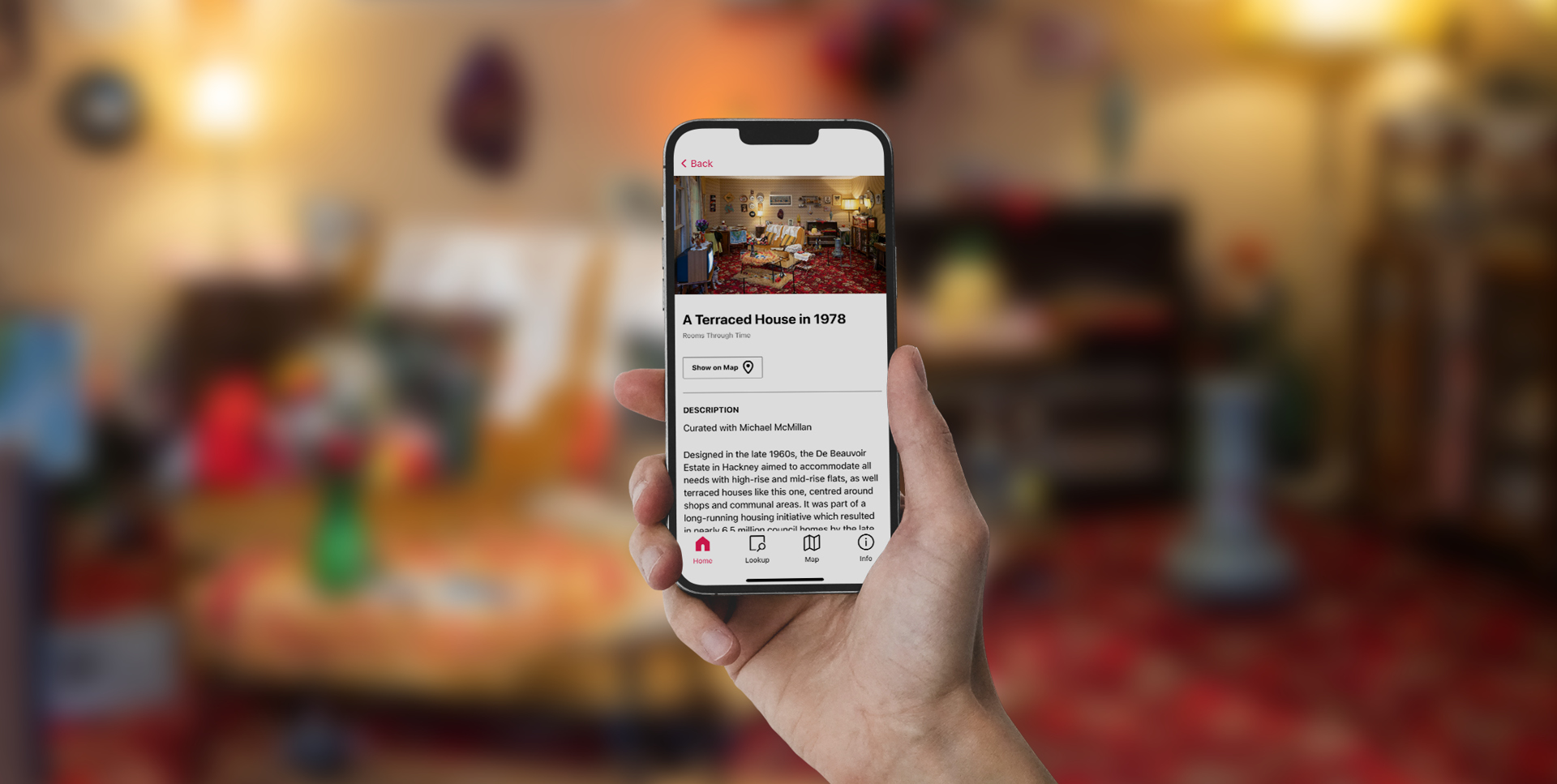
Free digital guide
Explore Museum of the Home with our digital guide on Bloomberg Connects, the free arts and culture app.
